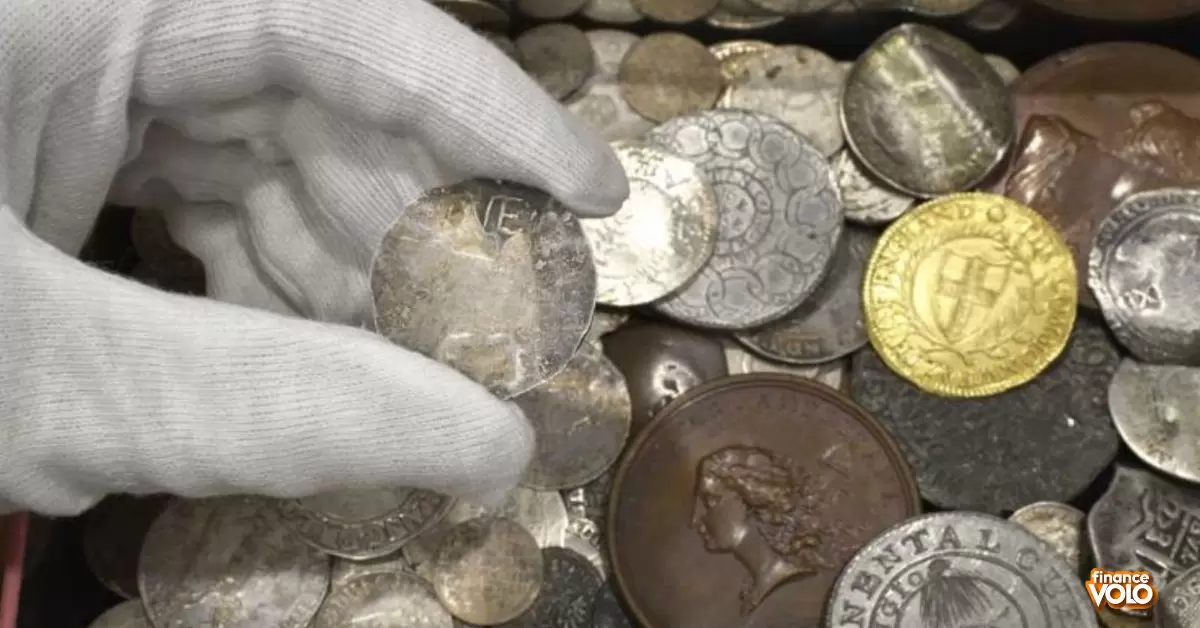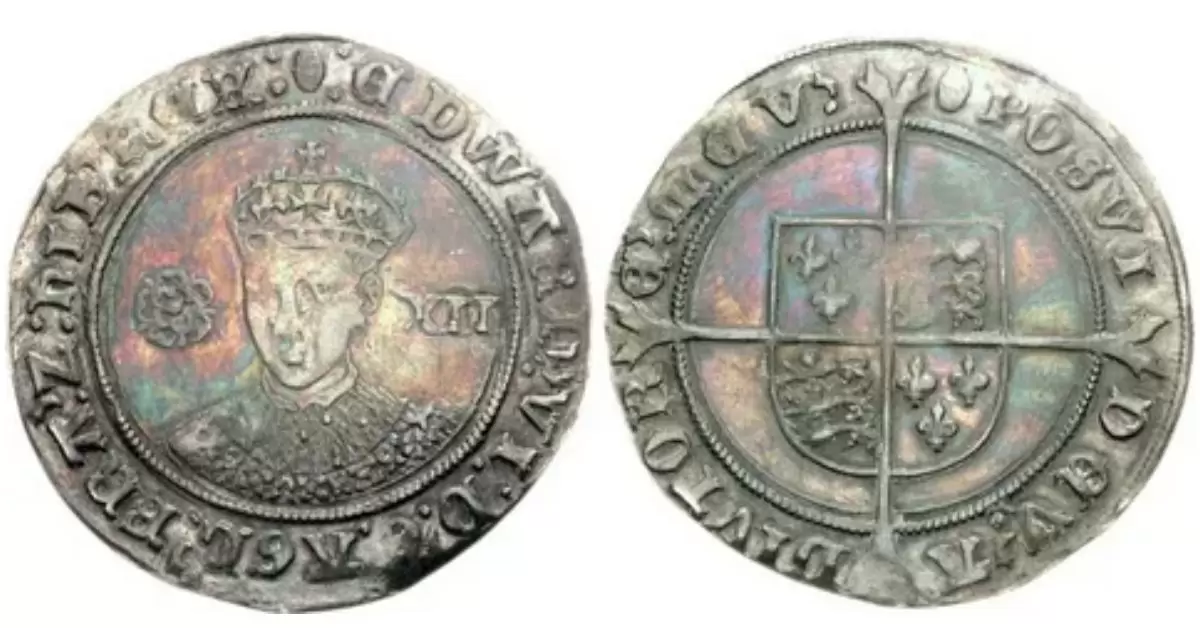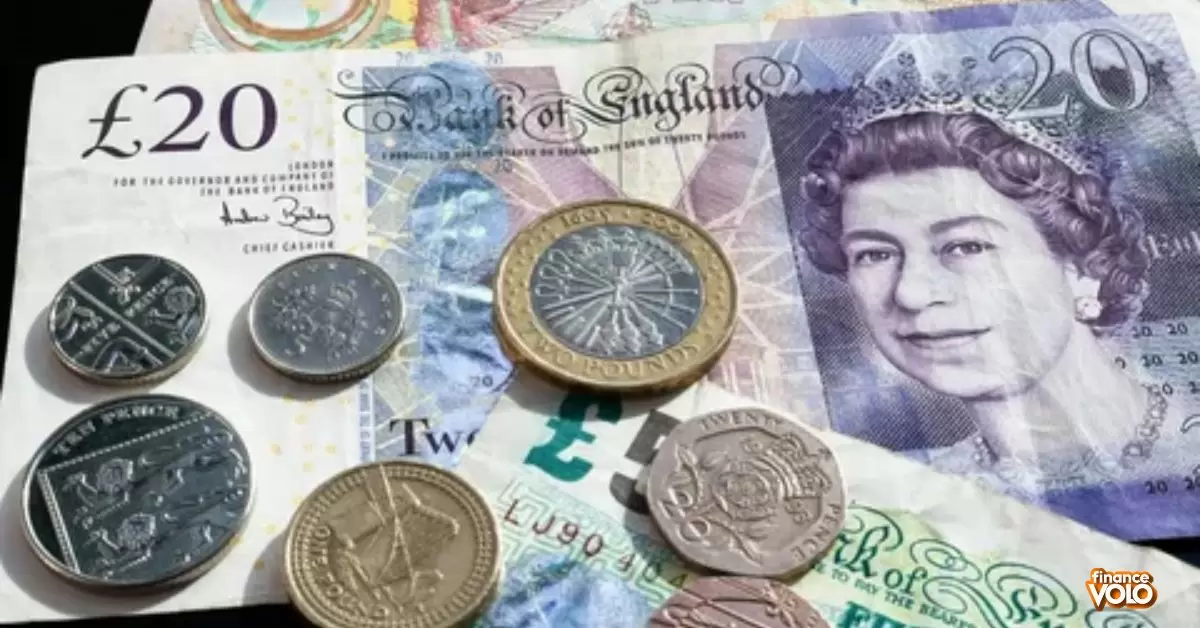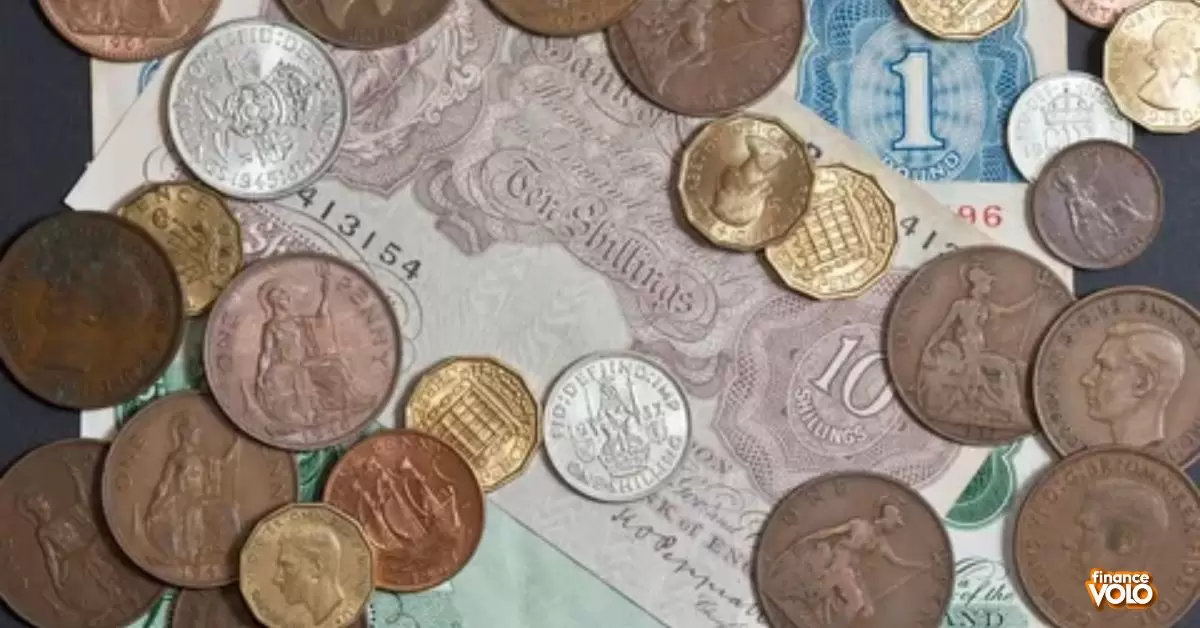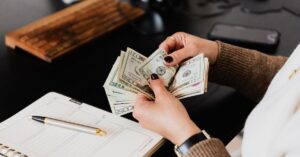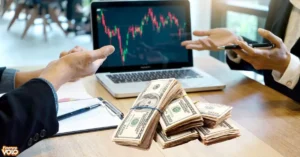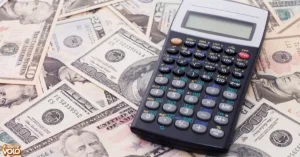Whether you’re a traveler planning a trip to East Africa or simply intrigued by currency exchange rates, understanding the worth of a shilling today can shed light on its significance in global economics.
Across nations like Kenya, Tanzania, and Uganda, the shilling remains a pivotal part of daily transactions, with its value fluctuating against major currencies like the US dollar. As of recent data, the exchange rate hovers around 100 Kenyan shillings to 1 USD, though this figure can vary due to economic dynamics. While some regions have moved away from the shilling as their official currency, collectors and enthusiasts still find value in its historical and numismatic appeal.
Whether you’re seeking practical information for financial planning or simply exploring the intricacies of global currencies, delving into the worth of a shilling today unveils a fascinating intersection of history, economics, and culture.
What Is a Shilling?
The shilling has a long and storied history, with its roots tracing back to the Anglo-Saxon period. Originally struck in silver, the coin derived its name from the Old English skilling meaning to divide or share.
Throughout the centuries, the shilling played a pivotal role in the British economy, serving as a vital unit of currency. It was divided into 12 pence, a system that endured for over 700 years until the decimalization of the pound in 1971.
Shillings were minted in various denominations, including:
- 1 shilling (1/-)
- 2 shillings and 6 pence (2/6 or half-crown)
- 5 shillings (5/- or “crown”)
These coins held significant purchasing power in their heyday, with a single shilling being roughly equivalent to a day’s wage for a skilled tradesman in the early 20th century. To put this into perspective, a loaf of bread cost around 2 pence, while a pint of beer could be purchased for 4 pence in those times.
A Brief History of the Shilling
The origins of the shilling can be traced back to the reign of King Offa of Mercia in the 8th century. Initially, these early shillings were struck from silver extracted from mines in northwestern England and Wales.
As the coin evolved through the centuries, its design underwent numerous changes, reflecting the artistic styles and preferences of each era. Some notable design periods include:
- The Hammered Coinage Period (c.600-1662): Shillings were struck by hand, one at a time, resulting in irregular shapes and designs.
- The Milled Coinage Period (1662-1971): The introduction of milling machines allowed for more uniform and intricate designs, featuring detailed portraiture and heraldic motifs.
- The Gothic Revival Period (1838-1887): During the reign of Queen Victoria, shillings were minted with ornate Gothic-style designs, inspired by the architectural revival of the time.
By the 20th century, the shilling had become an integral part of British culture, featuring prominently in literature, idioms, and daily transactions.
How Much Is a Shilling Worth Today?
While shillings are no longer legal tender in the United Kingdom, they still hold value as collectible items and historical artifacts. The worth of a shilling today depends on several factors:
- Rarity: Like any collectible, rarer shillings tend to command higher prices. For instance, a well-preserved 1853 Gothic Crown shilling can fetch upwards of $500 at auction.
- Condition: Coins in excellent or uncirculated condition are more valuable than those that show significant wear or damage.
- Historical significance: Shillings associated with notable events, rulers, or mintages may be more coveted by collectors.
- Collector’s market: The demand and interest among numismatists (coin collectors) also play a role in determining a shilling’s worth.
To give you a better idea, let’s look at some examples:
- A common circulated shilling from the early 20th century might be worth $2 to $5.
- A well-preserved shilling from the reign of Queen Victoria could fetch $10 to $50, depending on its year and condition.
- Rare or exceptional shillings, such as those from limited mintages or with errors, can command prices in the hundreds or even thousands of dollars.
Key Takeaways
- The worth of a shilling today depends on its rarity, condition, historical significance, and collector’s market demand.
- Common circulated shillings are typically valued between $2 and $5.
- Rare or exceptional shillings can fetch prices ranging from $100 to thousands of dollars.
- The value of a shilling can vary widely, making it essential to have coins appraised by a reputable numismatist or dealer.
The Evolution of British Currency
The shilling’s journey through history is intertwined with the broader evolution of British currency. In 1971, the United Kingdom officially adopted a decimal system, replacing the centuries-old pounds, shillings, and pence system with the modern pound and pence.
This transition, known as decimalization, marked the end of the shilling’s active circulation. However, the impact of this historic coin extends far beyond its obsolescence as legal tender.
Many popular idioms and expressions in the English language still bear the mark of the shilling, such as taking the King’s shilling (enlisting in the military), a penny for your thoughts, or a shilling short (lacking common sense). These linguistic remnants serve as a testament to the shilling’s deep-rooted cultural significance.
The Decimalization of the Pound
The process of decimalization was a monumental undertaking, requiring the withdrawal and demonetization of all pre-decimal coins, including shillings. This transition was designed to simplify the currency system and align it with the decimal based systems used by many other countries.
While the changeover was initially met with some resistance and nostalgia for the old system, the benefits of decimalization soon became apparent. Calculations and pricing became more straightforward, and the new decimal coinage system proved more efficient for commerce and trade.
However, the shilling’s legacy was preserved through the introduction of the 5 pence and 10 pence coins, which roughly approximated the value of the old shilling and two-shilling pieces, respectively.
The Legacy of Old British Coins
While shillings may no longer jingle in pockets or line cash registers, their legacy endures through the passionate pursuits of collectors and numismatists worldwide. The demand for vintage British coins, including shillings, has created a thriving collector’s market, where rare and well-preserved specimens are highly prized.
Collecting historical coins offers a tangible connection to the past, allowing enthusiasts to hold pieces of history in their hands. The intricate designs, minting techniques, and stories behind each coin captivate collectors, fueling their passion for preserving and appreciating these numismatic treasures.
Moreover, the value of certain shillings and other vintage coins is expected to appreciate over time, making them potential investment opportunities for those with a keen eye and deep knowledge of the numismatic world.
The Allure of Coin Collecting
Coin collecting, or numismatics, is a hobby that transcends mere financial gain. For many enthusiasts, the thrill lies in the hunt – scouring auction catalogs, attending coin shows, and meticulously researching the histories and stories behind each piece.
The tactile experience of holding a centuries-old coin, feeling the weight of its metal and tracing the intricate designs with one’s fingers, is an unparalleled sensation. It’s a connection to the past that cannot be replicated through digital means or virtual representations.
Furthermore, coin collecting fosters a sense of community and camaraderie among numismatists. Societies, clubs, and online forums serve as platforms for enthusiasts to share their knowledge, swap stories, and celebrate their shared passion for these tangible pieces of history.
Interesting Facts About Shillings
Design and Composition
Shillings were typically struck in silver, with their design and composition evolving over the centuries. Some notable design elements and materials include:
- The iconic portraiture of British monarchs, from the earliest Saxon rulers to Queen Elizabeth II.
- Intricate heraldic motifs, such as the Royal Arms or the Tudor Rose, emblazoned on the reverse side.
- The use of various silver alloys, with some shillings containing a higher percentage of precious metals.
One particularly striking design was the Gothic Crown shilling, minted during the reign of Queen Victoria. These shillings featured an ornate Gothic revival motif, with the monarch’s portrait surrounded by intricate architectural elements.
| Design Period | Composition | Notable Features |
| Hammered Coinage (c.600-1662) | Silver | Irregular shapes, hand-struck designs |
| Milled Coinage (1662-1971) | Silver alloys | Uniform designs, detailed portraiture |
| Gothic Revival (1838-1887) | Silver | Ornate Gothic architectural motifs |
Famous Shillings
Certain shillings have gained legendary status among collectors and historians alike, either due to their rarity, historical significance, or unique circumstances surrounding their minting or discovery. Here are a few examples:
- The Beau worth Hoard: In 1833, a remarkable cache of over 8,000 Saxon shillings was discovered in a field near Beau worth, Hampshire. This hoard, dating back to the 7th century, shed light on the early minting practices and monetary system of Anglo-Saxon England. The Beau worth shillings are highly coveted by collectors and museums alike, providing a rare glimpse into Britain’s distant numismatic past.
- The Cromwell Broad: Struck during the Commonwealth period under Oliver Cromwell, these shillings bore the Lord Protector’s portrait, a stark departure from the traditional monarchical imagery. Their distinctive design and limited mintage make them highly coveted by collectors. The Cromwell Broads represent a unique chapter in British history, when the nation briefly experimented with republican governance.
- The King’s Shilling: According to legend, a shilling was sometimes used as a symbolic token when enlisting in the British Army, giving rise to the phrase “taking the King’s shilling. Shillings associated with this tradition hold special significance for military historians and collectors. The simple act of accepting the shilling was seen as a binding commitment to serve the Crown, imbuing these coins with a deeper symbolic value.
- The Undated 20th Century Shilling: In a remarkable numismatic anomaly, a small number of shillings were minted in the early 20th century without a date stamp. These “undated shillings” are among the rarest and most sought-after pieces in British numismatics, with only a handful of examples known to exist. Their mysterious origins and scarcity have fueled speculation and fascination among collectors for decades.
Shilling Errors and Varieties
Like any long-standing coinage system, the minting of shillings was not immune to errors and variations. These numismatic oddities can range from minor die flaws to more significant mistakes, and they often command premium prices among collectors.
- Double Strikes: Occasionally, a coin would be struck twice by the minting press, resulting in a doubled image or overlapping designs. Double-struck shillings are highly prized by collectors for their rarity and visual appeal.
- Off-Center Strikes: When the blank planchet (coin blank) was misaligned during the minting process, the resulting coin would feature an off-center design, with parts of the image cut off or missing. These errors are particularly striking on shillings, where the intricate designs are disrupted by the misalignment.
- Milling Errors: The milled edges of shillings were sometimes improperly spaced or missing altogether, resulting in unique variations known as unfilled or partially milled coins.
Collectors and numismatists meticulously catalog and study these errors and varieties, as they offer insights into the minting processes and quality control measures of their respective eras.
Investing in Rare Coins
Tips for Collectors
For those considering delving into the world of coin collecting, shillings and other vintage British coins can be an excellent starting point. Here are some tips to keep in mind:
- Educate yourself: Learn about the history, varieties, and grading standards of the coins you wish to collect. Join numismatic societies, attend coin shows, and consult reputable resources to expand your knowledge.
- Start with affordable pieces: Begin your collection with more common shillings or coins within your budget, allowing you to gain experience before investing in rarer specimens.
- Consider condition and rarity: While condition is crucial, don’t overlook the significance of rarity. Even well-preserved common coins may have limited value compared to rarer pieces in lower grades.
- Develop a theme or focus: Many collectors choose to concentrate on specific series, monarchs, or mintages, allowing them to build a cohesive and focused collection.
- Protect your investment: Proper storage and handling techniques are essential to preserving the condition and value of your coins. Invest in airtight holders, albums, or cabinets designed specifically for numismatic collections.
- Buy the book before the coin: Before making a significant purchase, research the coin’s history, mintage figures, and market value to ensure you’re making an informed decision.
- Attend coin shows and auctions: These events provide opportunities to examine coins in person, network with fellow collectors, and potentially acquire rare specimens at competitive prices.
Investing in Rare Coins
Beyond the personal enjoyment of collecting, rare coins like shillings can also be viewed as potential investment opportunities. However, it’s crucial to approach numismatic investing with caution, research, and a long-term perspective.
One advantage of investing in rare coins is their tangible nature and limited supply. Unlike stocks or other financial instruments, each coin is a finite and unique asset, with rarity and condition playing significant roles in determining its value. As the supply of certain coins dwindles over time, their values can appreciate, making them attractive to investors seeking alternative assets.
Grading and Authentication
One of the most critical aspects of coin collecting and investing is ensuring the authenticity and accurately assessing the condition of your pieces. Professional grading and authentication services play a vital role in this process.
Reputable third-party grading companies, such as NGC (Numismatic Guaranty Corporation) or PCGS (Professional Coin Grading Service), employ expert numismatists to evaluate coins based on a standardized grading scale. This evaluation considers factors like strike quality, surface preservation, luster, and overall eye appeal.
Here’s a brief overview of the coin grading scale:
- Uncirculated (MS): Coins that have never been in circulation and exhibit no wear or imperfections.
- Almost Uncirculated (AU): Coins with minimal wear, appearing almost new but with slight evidence of light friction.
- Extremely Fine (EF): Coins with moderate wear, but with most design details still visible.
- Fine (F): Coins with moderate to significant wear, but with major design elements still discernible.
- Very Good (VG): Coins with heavy wear, but with enough design elements remaining to be identifiable.
- Good (G): Coins with severe wear, making some design elements difficult to distinguish.
Frequently Asked questions
What is the value of a shilling today?
the value of a shilling depends on the country. In some places, like Kenya, it’s still a valid currency with varying exchange rates.
Is the shilling still used as currency?
While some countries no longer use the shilling, others, like Kenya, Tanzania, and Uganda, still have it as their official currency.
How much is a Kenyan shilling worth in USD?
the value of the Kenyan shilling fluctuates. As of January 2022, it’s around 100 KES to 1 USD, but check current rates for accuracy.
Can I exchange old shillings for current currency?
Generally, banks in countries where the shilling is used will exchange old shillings for current currency. Check with your local bank for details.
Final Words
Determining the value of a shilling today is a nuanced task as it varies significantly depending on the country in question. Historically, the shilling has been a widely used currency, with its prominence in various parts of the world.
For instance, in Kenya, Tanzania, and Uganda, the shilling remains the official currency, and its value fluctuates against major currencies like the US dollar. As of recent data, the Kenyan shilling, for example, holds an exchange rate of approximately 100 KES to 1 USD, but this rate is subject to change due to economic factors.
In contrast, some countries no longer utilize the shilling as their currency, rendering it obsolete in those regions. However, collectors and enthusiasts may still trade in old shillings for their historical and numismatic value. Overall, the worth of a shilling today is contingent upon its current status as a valid currency and its exchange rate against other currencies in the global market.
